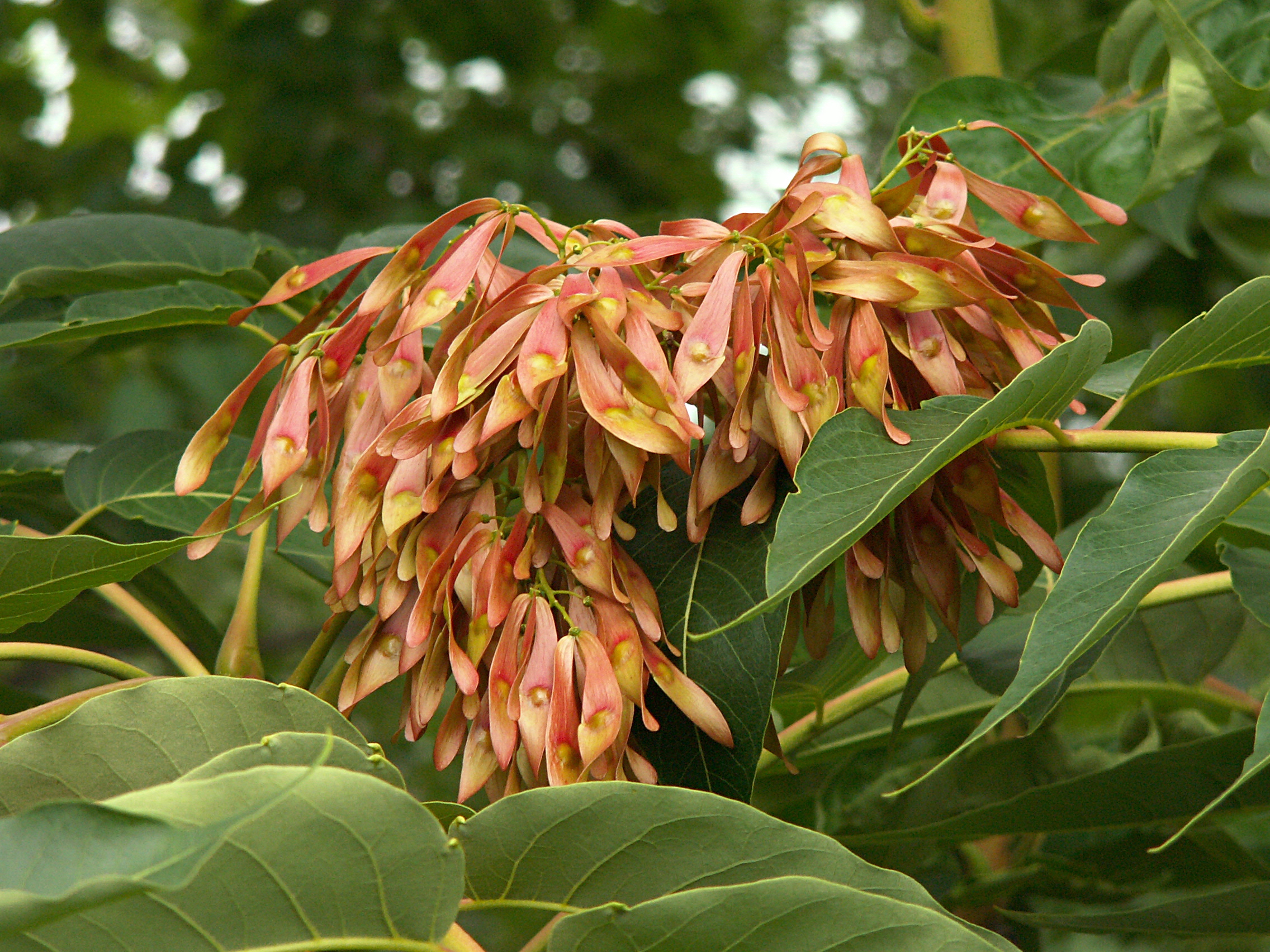
Obviously this is not known as “Pittsburgh Palm” in other cities, but here the name is common. Elsewhere it is known as Tree of Heaven, Chinese Sumac, Stinking Sumac, Stink Tree, Ghetto Palm, and—because of its aggressive invasiveness—Tree from Hell. It grows everywhere, whether you like it or not; it can pop up in the chimney of an old house or in the crack of a sidewalk.
Nevertheless, it came to this country as a prized ornamental tree, and the female trees (the species is dioecious, meaning that the male and female flowers are on separate plants) are striking in midsummer when they are topped with tufts of red seeds.
This tree was growing beside the bicycle ramp to the Herr’s Island Railroad Bridge, which conveniently allowed us to photograph the top of it.

Gray describes the genus and the species, which he calls A. glandulosa (there are more than a dozen botanical synonyms for this plant):
AILÁNTHUS Desf. TREE OF HEAVEN. Flowers polygamous. Calyx regular, 5-parted, the lobes imbricated. Petals 5, infolded-valvate. Stamens in staminate flowers 10, in perfect flowers 2-3, in pistillate flowers none. Disk lobed. Ovary 2-5-parted, becoming in fruit 1-5 narrowly oblong membranaceous samaras (1-seeded in the middle). — Handsome trees of rapid growth. Leaves odd-pinnate. Flowers small, green or yellowish, in ample terminal panicles, especially the staminate of unpleasant odor. (Name said to be from a vernacular Moluccan designation, meaning tree of heaven, in allusion to the height in the native habitat.)
A. glandulosa Desf. Leaves 3-6 dm. long, 11-23-foliolate; leaflets ovate, acuminate, entire or sparingly toothed toward the base. — Extensively cultivated as a shade tree, freely spreading by suckers, and locally self-sown. (Introd. from Asia.)
